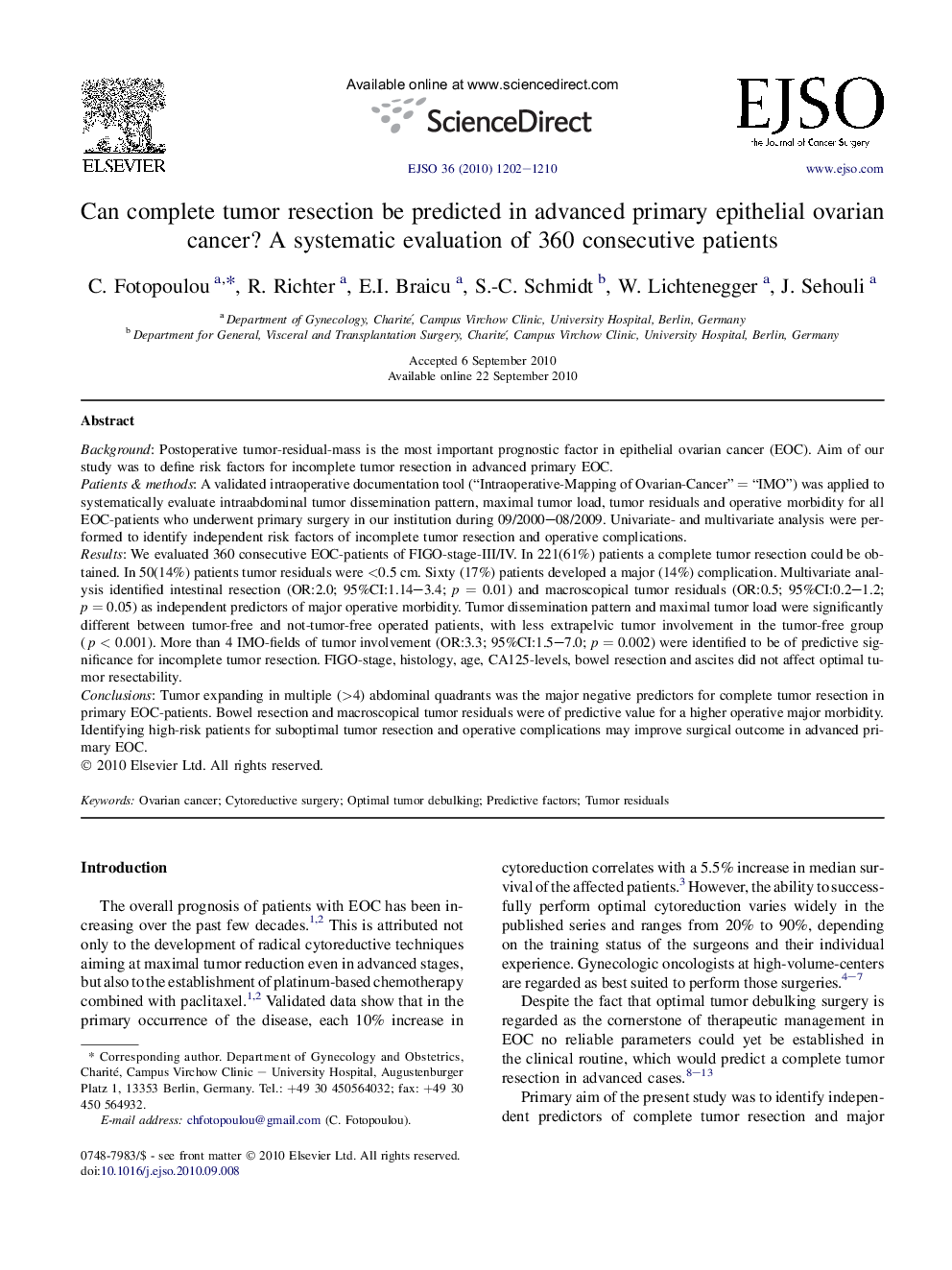| کد مقاله | کد نشریه | سال انتشار | مقاله انگلیسی | نسخه تمام متن |
|---|---|---|---|---|
| 3987062 | 1601431 | 2010 | 9 صفحه PDF | دانلود رایگان |

BackgroundPostoperative tumor-residual-mass is the most important prognostic factor in epithelial ovarian cancer (EOC). Aim of our study was to define risk factors for incomplete tumor resection in advanced primary EOC.Patients & methodsA validated intraoperative documentation tool (“Intraoperative-Mapping of Ovarian-Cancer” = “IMO”) was applied to systematically evaluate intraabdominal tumor dissemination pattern, maximal tumor load, tumor residuals and operative morbidity for all EOC-patients who underwent primary surgery in our institution during 09/2000–08/2009. Univariate- and multivariate analysis were performed to identify independent risk factors of incomplete tumor resection and operative complications.ResultsWe evaluated 360 consecutive EOC-patients of FIGO-stage-III/IV. In 221(61%) patients a complete tumor resection could be obtained. In 50(14%) patients tumor residuals were <0.5 cm. Sixty (17%) patients developed a major (14%) complication. Multivariate analysis identified intestinal resection (OR:2.0; 95%CI:1.14–3.4; p = 0.01) and macroscopical tumor residuals (OR:0.5; 95%CI:0.2–1.2; p = 0.05) as independent predictors of major operative morbidity. Tumor dissemination pattern and maximal tumor load were significantly different between tumor-free and not-tumor-free operated patients, with less extrapelvic tumor involvement in the tumor-free group (p < 0.001). More than 4 IMO-fields of tumor involvement (OR:3.3; 95%CI:1.5–7.0; p = 0.002) were identified to be of predictive significance for incomplete tumor resection. FIGO-stage, histology, age, CA125-levels, bowel resection and ascites did not affect optimal tumor resectability.ConclusionsTumor expanding in multiple (>4) abdominal quadrants was the major negative predictors for complete tumor resection in primary EOC-patients. Bowel resection and macroscopical tumor residuals were of predictive value for a higher operative major morbidity. Identifying high-risk patients for suboptimal tumor resection and operative complications may improve surgical outcome in advanced primary EOC.
Journal: European Journal of Surgical Oncology (EJSO) - Volume 36, Issue 12, December 2010, Pages 1202–1210